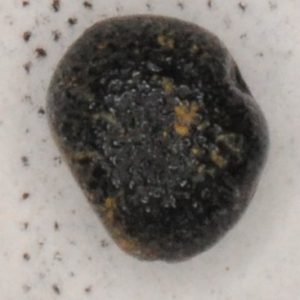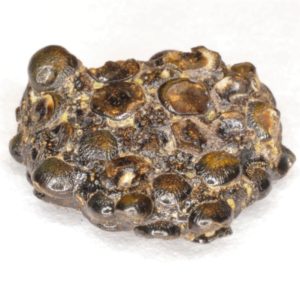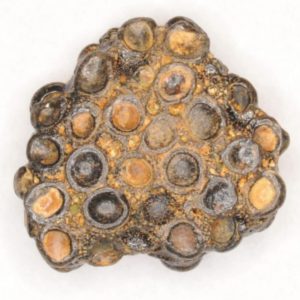NJfossils.com
"Fossils aren't a hobby, they're a lifestyle."Bonefish (Paralbula casei)
Age – Late Cretaceous; Commonality – Common; Size – teeth: 2-3 mm, mouth plates: up to an inch
The bonefish belongs to the phyllodonts. The phyllodonts don’t have set rows of teeth; they have an alternating pattern of replacement teeth. When one tooth is shed off, there is not a replacement tooth emerging right under it. The teeth are small and look like a flattened sphere. The roots are often missing. The crown has a pattern of radiating ridges emanating from its center. The types of mouth plates that can be found are parasphenoids, basibranchials, and vomerines. Mouth plates and shed teeth are the only items that can usually be found. The Bonefish is still alive today. Xiphactinus used to be related to it.
Teeth
Most teeth are rootless and have an approximately circular shape with ridges emanating from the center.
This one is a bit of a different shape. These teeth are pretty amorphous and can take on a variety of shapes.
This tooth is not that of P. casei. It is not identified yet, but is included here for comparison purposes.
Mouth Plates
This is a typical mouth plate fragment. Most are small and the type of mouth plate is usually indeterminate.
This is a fairly rare example of a complete/nearly complete mouth plate. It is 1.3 X 1.2 cm. I have not determined what the name of the mouth plate type is, but it would have been located on the anterior of the lower jaw. The part of the mouth plate that narrows and contains smaller teeth would have been at the front of the jaw. There are a couple teeth showing heavy in vivo wear that would have been shed soon if the fish was still alive. You can see two unerupted teeth at the posterior of the mouth plate that have roots.





















